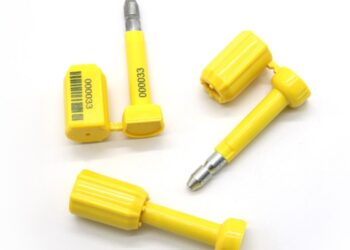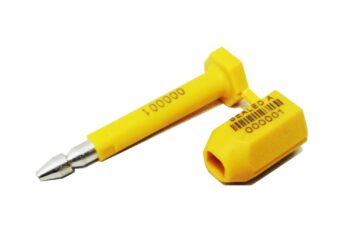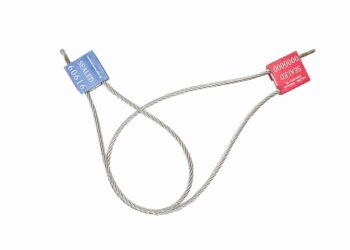The validation process of ISO 17712 security seals is a crucial aspect of ensuring the integrity and security of cargo containers during transportation. ISO 17712 is an international standard that establishes specifications for mechanical seals used on freight containers. These seals play a vital role in safeguarding goods from tampering, theft, and unauthorized access. The validation process involves a series of comprehensive steps to verify the effectiveness and compliance of security seals with the standard’s requirements.
- Selection of Appropriate Seals: The validation process begins with selecting security seals that adhere to the ISO 17712 standard. These seals are categorized into three classes based on their level of security: “H” (High Security), “S” (Security), and “I” (Indicative). The choice of seal depends on the level of risk associated with the cargo and the transport route.
- Manufacturer Accreditation: Ensure that the chosen security seal manufacturer is accredited and compliant with ISO 17712 standards. Manufacturers should provide documentation and evidence of conformity, including test reports and quality management system certifications.
- Physical Inspection: Conduct a thorough physical inspection of the seals. Examine the seals for any signs of tampering, damage, or defects that could compromise their effectiveness. This inspection includes checking the seal’s structure, locking mechanisms, and overall condition.
- Tamper-Evident Features: Verify that the security seals possess tamper-evident features, such as unique identification numbers, barcodes, or RFID technology. These features enable easy tracking and tracing of the seal’s origin and ensure that any tampering attempts are detectable.
- Strength and Durability Testing: Perform strength and durability tests on the seals to assess their resistance to various environmental conditions, mechanical stress, and attempts at forced removal. These tests ensure that the seals can withstand the rigors of transportation without failing.
- Validation Testing: Conduct validation testing according to ISO 17712 requirements. This includes tests for tensile strength, shear testing, impact testing, and bending testing. These tests evaluate the seal’s ability to resist unauthorized access and tampering.
- Certification and Documentation: Obtain certification from an accredited testing laboratory that the security seals meet ISO 17712 standards. This certification confirms the seals’ compliance with the required security levels and provides a reference for potential users.
- User Training: Provide training to individuals who will be responsible for applying and verifying the security seals. Proper application techniques ensure that seals are properly affixed, reducing the risk of tampering.
- Chain of Custody Procedures: Develop and implement chain of custody procedures that outline the proper handling, application, and removal of security seals. These procedures help maintain the integrity of the seals throughout the transportation process.
- Periodic Audits and Inspections: Regularly conduct audits and inspections to ensure ongoing compliance with ISO 17712 standards. This includes assessing the effectiveness of security measures, seal application processes, and adherence to chain of custody procedures.
- Technology Integration: Explore opportunities to integrate advanced technologies, such as GPS tracking, electronic seals, or real-time monitoring systems, to enhance the security and traceability of cargo containers.
- Record Keeping: Maintain detailed records of the validation process, including test results, certifications, training documentation, and audit reports. These records serve as evidence of compliance and can be used for reference in case of disputes or investigations.
Conclusion:
the validation process of ISO 17712 security seals involves a comprehensive series of steps aimed at ensuring the effectiveness, compliance, and reliability of these seals for safeguarding cargo containers during transportation. Adhering to these steps helps mitigate the risk of tampering, theft, and unauthorized access, contributing to the overall security and integrity of global supply chains.











